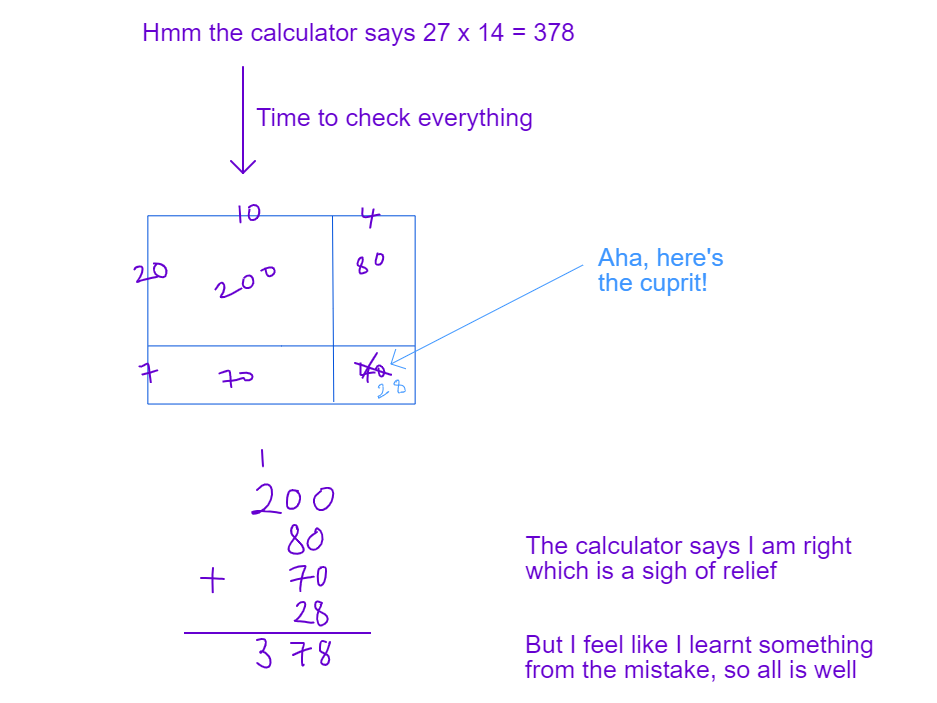How to teach method selection by articulating internal monologue to pupils
We’ve all encountered pupils who stare at test questions blankly despite having a gut feeling on what to do.
When pupils encounter a novel question on an exam, the very first emotions and thoughts they have might be something like this internal monologue:
What is this question?
Where do I begin?
How do I decode what this question is actually asking?
What topic/s could it be about?
Is it on something we are learning now or something covered some weeks/months/years ago?
Pupils acquire a personal methods toolbox after years of learning mathematics. And they need to learn which method to apply for what question. While this may seem straightforward to us, the value of explicitly articulating this process became apparent after listening to Mark McCourt on a podcast with Craig Barton (1:24:45 onwards).
We can guide our pupils by vocalising an acted out internal monologue, showcasing how an expert would approach the problem. Speaking aloud:
Hmm, OK so I see a right angled triangle.
Pythagoras’ Theorem related?
Trigonometry?
Or something else?
Two side lengths given, so it could be Pythagoras?
Hang on, let me read the question again to confirm what it is actually asking for, usually the last sentence in the question.
Ah, it asks for an angle.
So, not a Pythagoras’ Theorem question then as that involves side lengths.
Most likely Trigonometry?
Let’s assume so and start this as a Trigonometry question.
I should label all the sides accordingly.
<Labels sides with s,o,h>
Two side lengths given (o and h) and you need to find the angle.
It is a Trigonometry question after all.
The side lengths are given so the inverse sine function will be involved…etc.”
But what if no immediate strategy is apparent at all? Welcome to being a real mathematician! It happens to me with tutees sometimes when they drop a question. I role model how to start attacking a question by scribbling out something. Quite often that is re-writing some bits of the problem by sifting through information. Probing the question more with some guessed strategies, poking it with a stick (as Paul Lockhart would say). Some of these strategies will be abandoned later but that is ok because each attempt reveals something new about the problem. All of this is articulated live.
Pretending to be a novice when you are not one is initially challenging but it gets easier the more you do it.
Method selection is part of the “Practice” phase of the Teach-Do-Behave-Practice mastery cycle. It is crucial to differentiate it from the “Teach-Do” phase, which serves different objectives (building automaticity and fluency). Questions at that phase already have cue and recency. If I have just covered 5 questions on finding angles using the inverse sine function then of course the next question will be on that. There is no element of uncertainty in decoding the question from a mixed assortment of topic questions.
Platforms like Corbettmaths 5-a-day provide invaluable practice for pupils to continuously refine their method selection skills. And this practice leads to much better long term understanding.
https://twitter.com/EmathsUK/status/1174657195612540928?s=20&t=3TPQkzKdrSzRIRf0pqE5mw
Over the past five years, I’ve integrated this approach into my tutoring with great success. In forthcoming blog posts, I’ll share case studies in real-world cases.
Ultimately humans learn a lot through observation and mimicry, absorbing not just technical details but also the emotional nuances of problem-solving. By articulating our problem-solving processes and giving pupils a glimpse into ‘under the hood’ thinking, we help pupils hone their own method selection skills. Something they then have forever in their lives.

